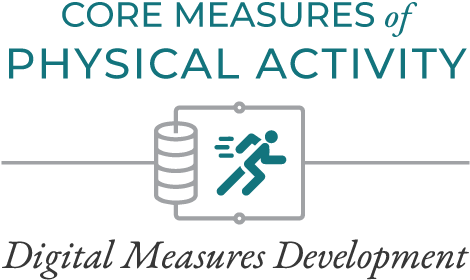Join us to transform mental health research and care
Get involved in an upcoming DiMe project


The health benefits of physical activity (PA) for patients are indisputable. In the short term, engaging in PA improves anxiety, blood pressure, and sleep. In the long term, the benefits only continue to stack – including the prevention of chronic diseases and improvements in mental health, overall health, and quality of life.
Sensor-based technology provides opportunities to capture patient progress and performance of physical activity with high resolution and during their daily lives, enabling clinicians, advanced practice providers, and other allied health professionals to engage in more informed discussions with patients on their care plan.

Dr. Felipe Dominguez is a family doctor who often assesses, prescribes, and refers patients for physical activity (PA).
Dr. Dominguez is caring for a 51-year-old patient, Mr. Richard Chan, who is overweight and has hypertension, putting him at a higher risk of cardiovascular disease and type 2 diabetes. Mr. Chan’s intake form reveals that he is not meeting the recommended weekly amount of physical activity for adults. During consultation, Mr. Chan reveals that with his office job, he lives a relatively sedentary lifestyle, but would like to make changes to have a healthier lifestyle. He mentions a wearable his daughter gifted him and how he uses it to track his physical activity.
Dr. Dominguez prescribes him at least 100 minutes of moderate to vigorous physical activity (MVPA) a week and they discuss how Mr. Chan can potentially achieve this goal and even have fun doing so. Mr. Chan also mentions that he’s been trying to walk more every day and Dr. Dominguez encourages him to monitor his step count with his wearable.
At the end of the consultation, Dr. Dominguez provides Mr. Chan with a pamphlet containing a QR code for a health app with behavioral nudges and a care management plan affiliated with his personal health record. The app captures physical activity measures and vitals from his wearable and allows Mr. Chan to give permission for Dr. Dominguez to see a summary of Mr. Chan’s progress in his electronic health record system, allowing greater management of care and informed decision-making related to his specific physical activity goals and plans. At a six-month touchpoint, Mr. Chan has lost ten pounds and his blood pressure has improved. Together, they review a summary of his progress of time spent in MVPA per week and daily step count. Mr. Chan shares that he walks with his daughter at least once a week and has registered in a pickleball league in a local community center.
Dr. Dominguez congratulates him and they discuss raising his goal to 150 minutes of MVPA a week, based on recommended guidelines. Mr. Chan is motivated and determined to continue on his health journey, empowered by the ability to set goals and receive feedback on this progress, which is made possible through digital measurement of physical activity.
|
Question corner: In practice, how can these systems (e.g., Dr. Dominguez’s EHR system, the patient engagement app, etc.) work together? A Physical Activity Implementation Guide was recently published in HL7, in accordance with Physical Activity Guidelines for Americans. It outlines the workflow and potential players and systems in physical activity prescription, goal setting, and referral. (Check out section 1.2.1 for further details of the scenario) |
|
{note: adapted from scenario in section 1.2.1 of the HL7 physical activity implementation guide} |